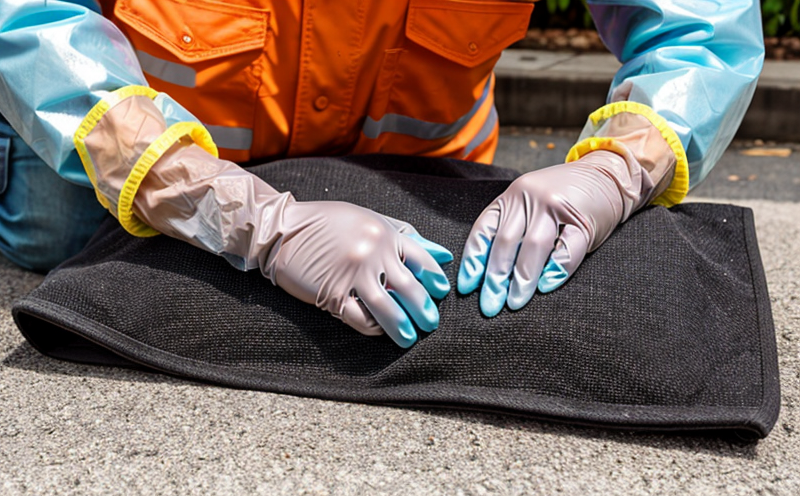Chemical resistant glove inspection
The inspection of chemical resistant gloves is a critical aspect of ensuring occupational safety and compliance with international standards. Personal Protective Equipment (PPE) plays a pivotal role in safeguarding workers from hazardous chemicals, but the effectiveness of this protection can only be guaranteed through rigorous inspection.
Chemical resistant gloves are designed to protect against various chemical agents by providing a barrier that prevents direct contact between the skin and harmful substances. However, these gloves must undergo regular inspections to ensure their integrity and performance. The inspection process involves several steps, including visual examination for defects, mechanical testing to assess strength and durability, and permeation tests to determine the resistance of the glove material against specific chemicals.
During a chemical resistant glove inspection, it is essential to follow internationally recognized standards such as ISO 374-1, which specifies types and performance levels of gloves for protection against chemicals. This standard ensures that the gloves are manufactured according to strict criteria, thus enhancing their reliability in real-world conditions.
The primary goal of this inspection is to ensure that the chemical resistant gloves meet the necessary standards and perform as expected under various working conditions. By adhering to these guidelines, employers can maintain a safe work environment and comply with legal requirements regarding occupational health and safety.
Applied Standards
| Standard | Description |
|---|---|
| ISO 374-1:2016 | Type and Performance Levels of Gloves for Protection against Chemicals, Part 1: Classification |
| ASTM F709-18 | Standard Specification for Butyl Rubber Protective Gloves |
The inspection process is guided by several internationally recognized standards, including ISO 374-1:2016 and ASTM F709-18. These standards provide the necessary framework to ensure that chemical resistant gloves meet stringent performance criteria.
ISO 374-1:2016 is particularly important as it classifies the types of gloves based on their protective properties against different chemicals. This classification helps in selecting the appropriate glove for specific applications, ensuring that workers are adequately protected from potential hazards.
ASTM F709-18 provides specifications and performance criteria for butyl rubber protective gloves, which are commonly used due to their excellent chemical resistance properties. Compliance with these standards ensures that the gloves maintain their integrity and effectiveness over prolonged use.
Benefits
- Ensures worker safety by identifying potential defects in chemical resistant gloves before they can cause harm.
- Avoids costly downtime and accidents due to compromised glove integrity, leading to increased productivity.
- Facilitates compliance with international standards and regulations, reducing the risk of legal penalties.
- Promotes a safer work environment by ensuring that PPE is effective in preventing chemical exposure.
- Reduces waste by identifying gloves that are still functional but need to be replaced due to wear and tear or use beyond their intended lifespan.
The benefits of regular inspection of chemical resistant gloves extend far beyond mere compliance. They contribute significantly to the overall safety and efficiency of a workplace, thereby enhancing productivity and reducing potential risks associated with chemical exposure.
International Acceptance and Recognition
- The inspection process for chemical resistant gloves is recognized globally, ensuring that the results are universally accepted in various industries.
- Compliance with international standards such as ISO 374-1:2016 and ASTM F709-18 guarantees acceptance by regulatory bodies worldwide.
- The use of internationally recognized inspection methods enhances trust between suppliers, buyers, and end-users in the PPE market.
Internationally accepted standards and methodologies for chemical resistant glove inspections ensure that the results are reliable and consistent across different regions. This recognition is crucial for maintaining high safety standards and fostering international trade in PPE products.





